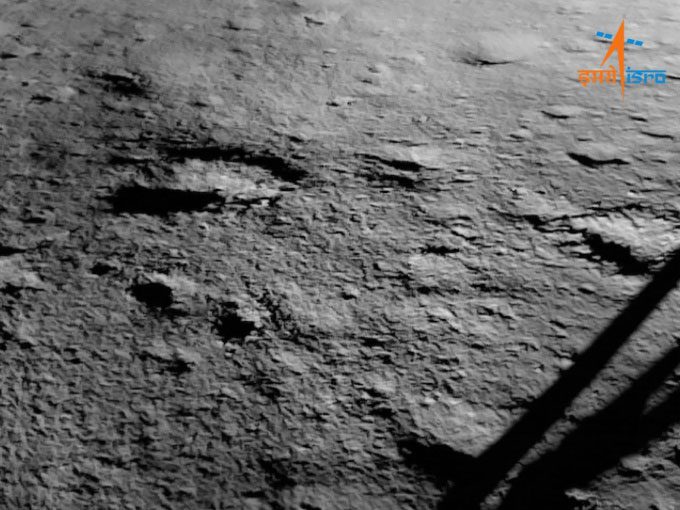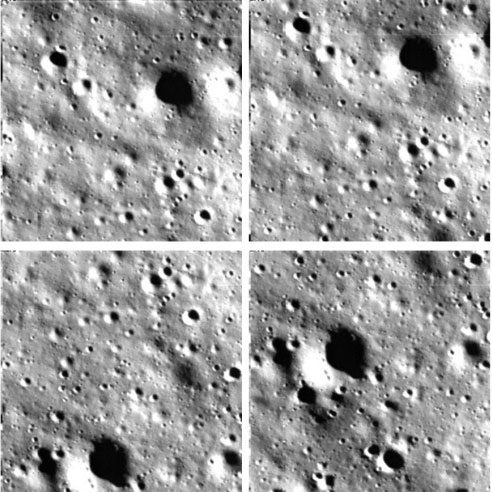The first image of the Moon’s surface was captured by the Indian spacecraft shortly after the Vikram lander successfully touched down at 7:34 PM on August 23 (Hanoi time).

Image showing part of the landing site of the Vikram lander on the Moon. (Photo: ISRO).
The image taken by the Landing Imager Camera reveals a portion of the Vikram lander’s landing site. The lander selected a relatively flat area on the lunar surface, according to the Indian Space Research Organisation (ISRO).
Just a few hours after Vikram landed, ISRO announced on Twitter that the lander had established communication with the Mission Operations Centre (MOX) and the Indian Space Research Organisation Telemetry, Tracking and Command Network (ISTRAC) located in Bengaluru, Karnataka, southern India. Additionally, the agency shared new images of the Moon’s surface captured by Vikram’s Lander Horizontal Velocity Camera during its descent.

The Vikram lander capturing images of the Moon’s surface during its landing. (Photo: ISRO)
Earlier, at 7:14 PM on August 23, ISRO activated the automatic landing mode to bring the Vikram lander down to the Moon. There was no intervention from the control station on Earth during the automatic landing sequence. The lander began its descent at 7:15 PM, gradually reducing altitude to land softly near the Moon’s south pole. The final minutes of the lunar landing are referred to as “the 15 terrifying minutes.”
The landing speed was below the target of 2 meters per second, raising hopes for future missions, according to ISRO President S. Somnath. He expressed that the next 14 days, during which experiments would be conducted by the lander’s instruments and the Pragyan rover, would be fascinating.
Vikram stands about 2 meters tall and weighs over 1,700 kilograms, including the 26-kilogram Pragyan rover it carries. The majority of Vikram’s mass is comprised of propellant. Both Vikram and Pragyan are solar-powered and are expected to operate for one lunar day (approximately 14 Earth days) before the dark and cold lunar night depletes their batteries. This duo will conduct a series of experiments, including spectral analysis of the Moon’s surface mineral composition.
Vikram is equipped with four scientific instruments, including a thermal probe capable of penetrating about 10 centimeters into the lunar soil to record the temperature of the rocks throughout the lunar day. The lander also features a retroreflector, which is expected to remain functional long after the lander ceases operations. Meanwhile, the Pragyan rover is equipped with a Laser Induced Breakdown Spectroscopy (LIBS) instrument and an Alpha Particle X-ray Spectrometer (APXS) to study lunar rocks and soil.
The success of Chandrayaan-3 marks India as the fourth country in the world to land on the lunar surface, following the Soviet Union, the United States, and China. This mission also makes India the first country to land near the Moon’s south pole, an area of great interest due to the potential presence of water ice, which could be used as propellant or for sustaining life. This region is also considered more challenging to land on than areas near the equator due to technical issues related to lighting, communication, and terrain.





















































